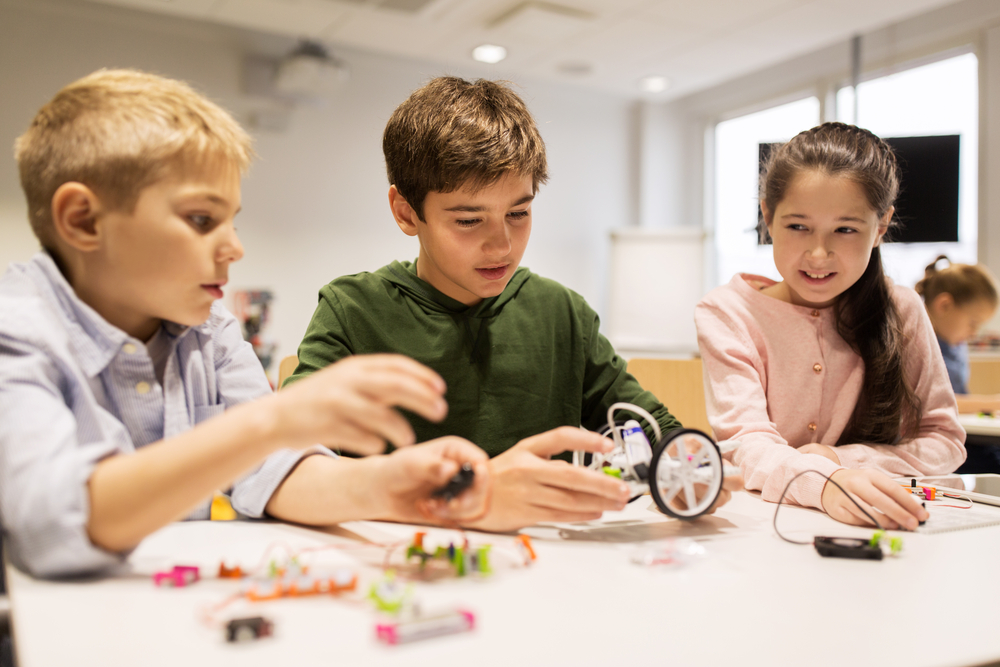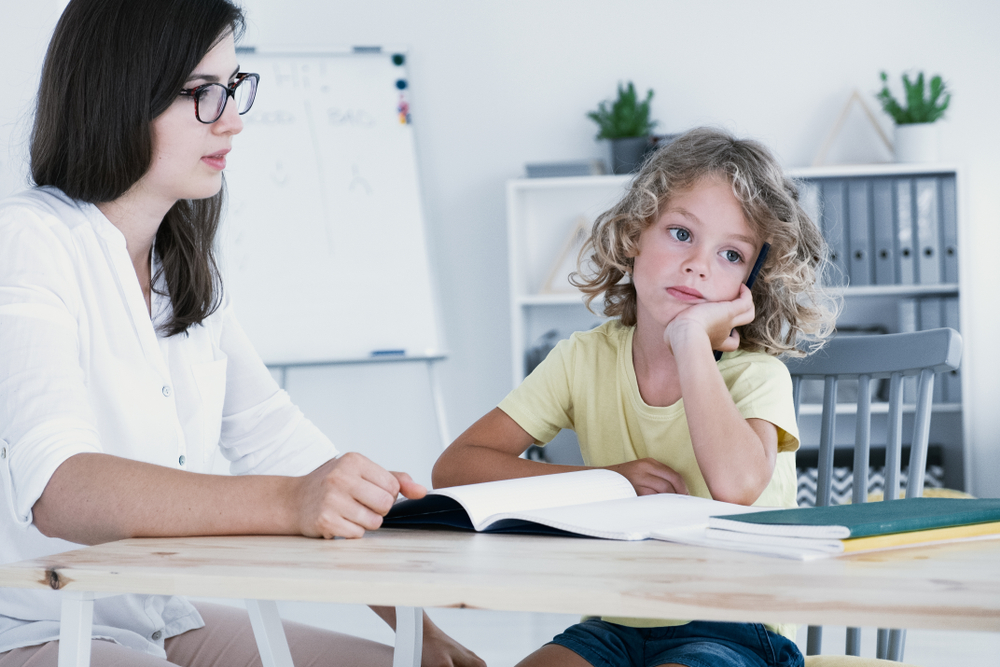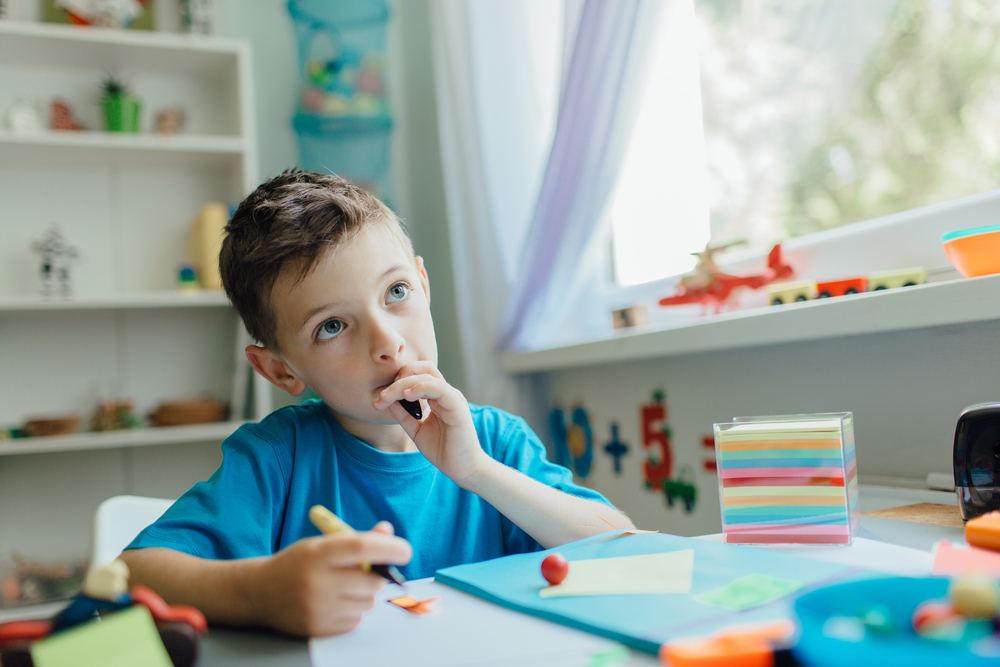Spatial awareness Science Worksheets for Ages 4-7
7 filtered results
-
From - To
Discover the fascinating world of spatial awareness with Kids Academy's Science Worksheets, designed for children ages 4-7. These engaging activities help young learners develop crucial skills such as understanding shapes, patterns, distances, and spatial relationships. Through a variety of fun and educational exercises, children will enhance their problem-solving abilities and improve their sense of direction and organization. Each worksheet is carefully crafted to align with early learning standards, making it an excellent resource for parents and educators. Foster your child's curiosity and support their cognitive development with our expertly designed spatial awareness worksheets.
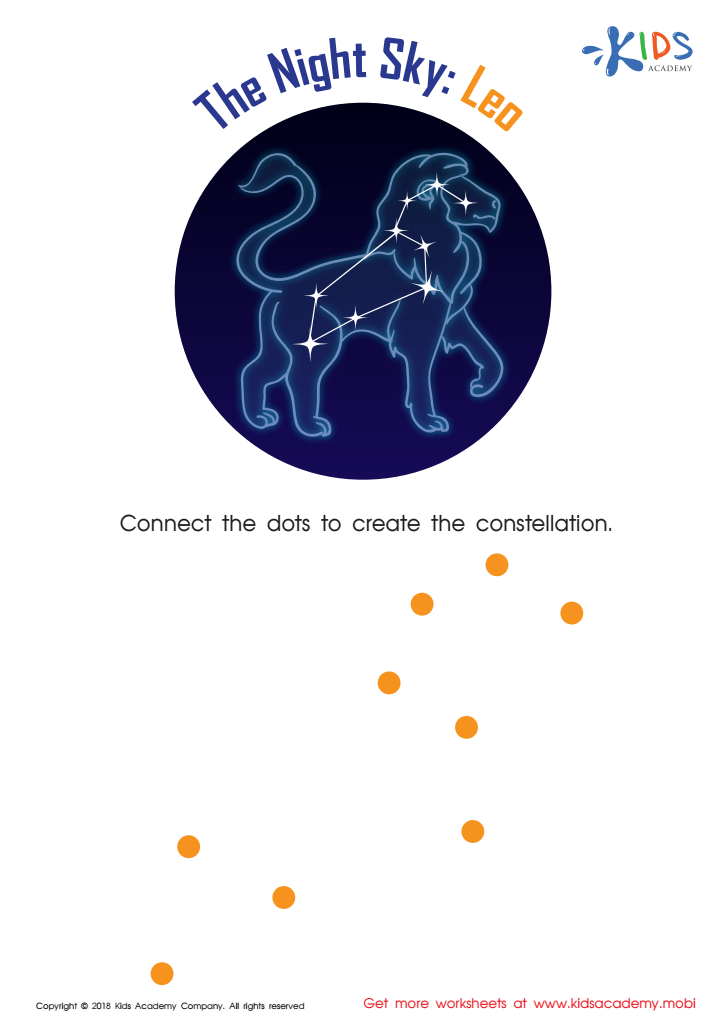

The Night Sky: Leo Worksheet
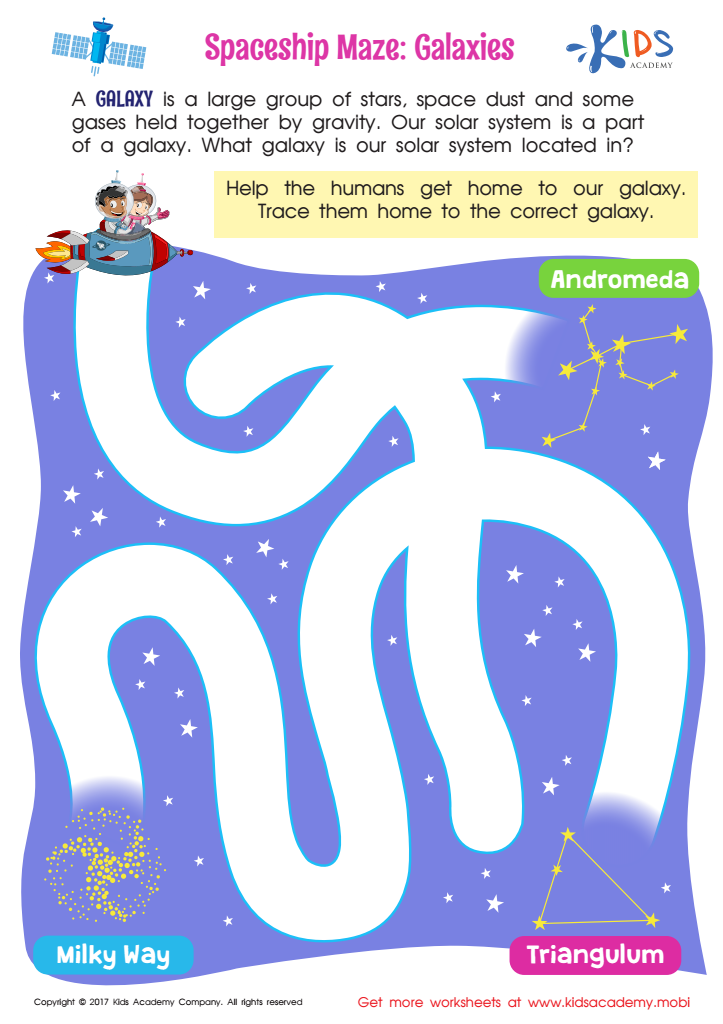

Spaceship Maze: Galaxies Worksheet
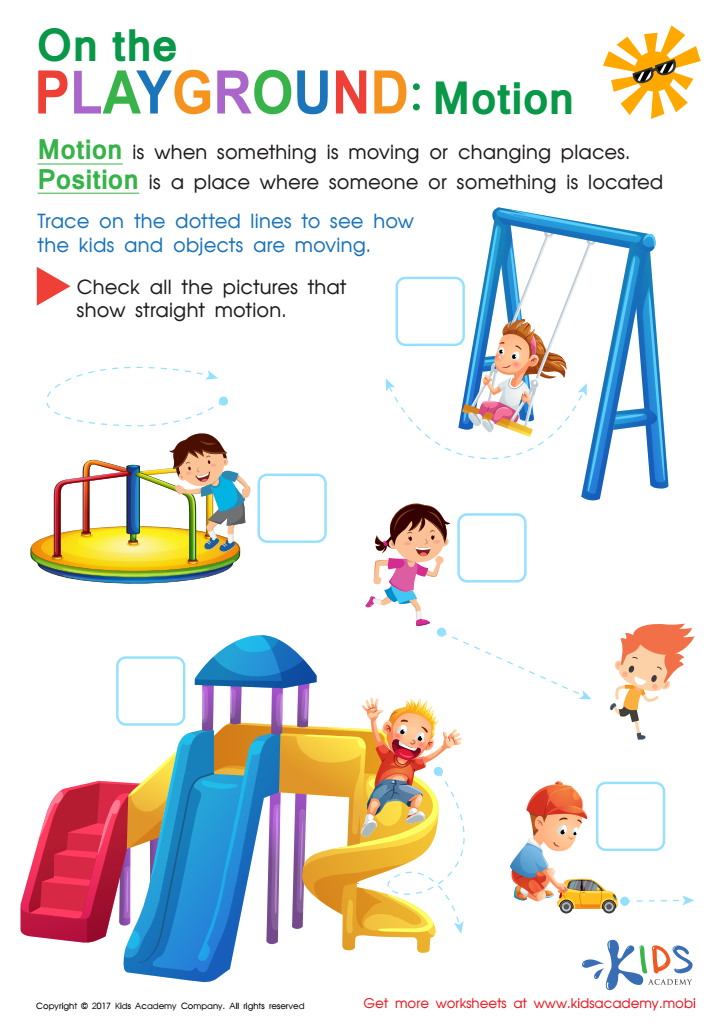

Position and Motion Worksheet
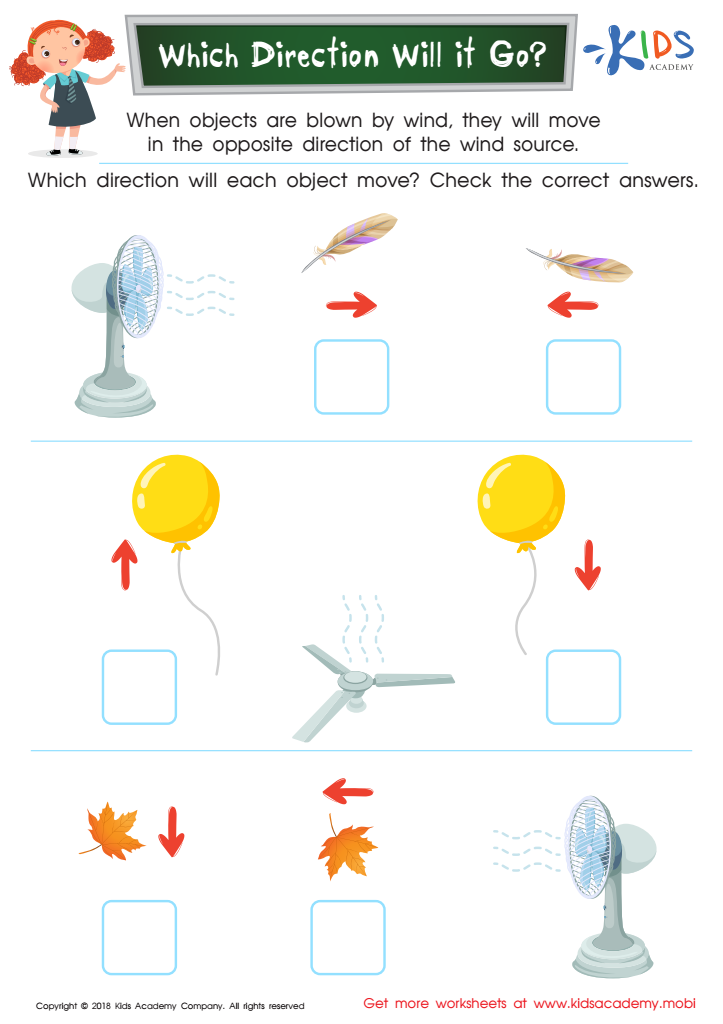

Which Direction Will it Go? Worksheet
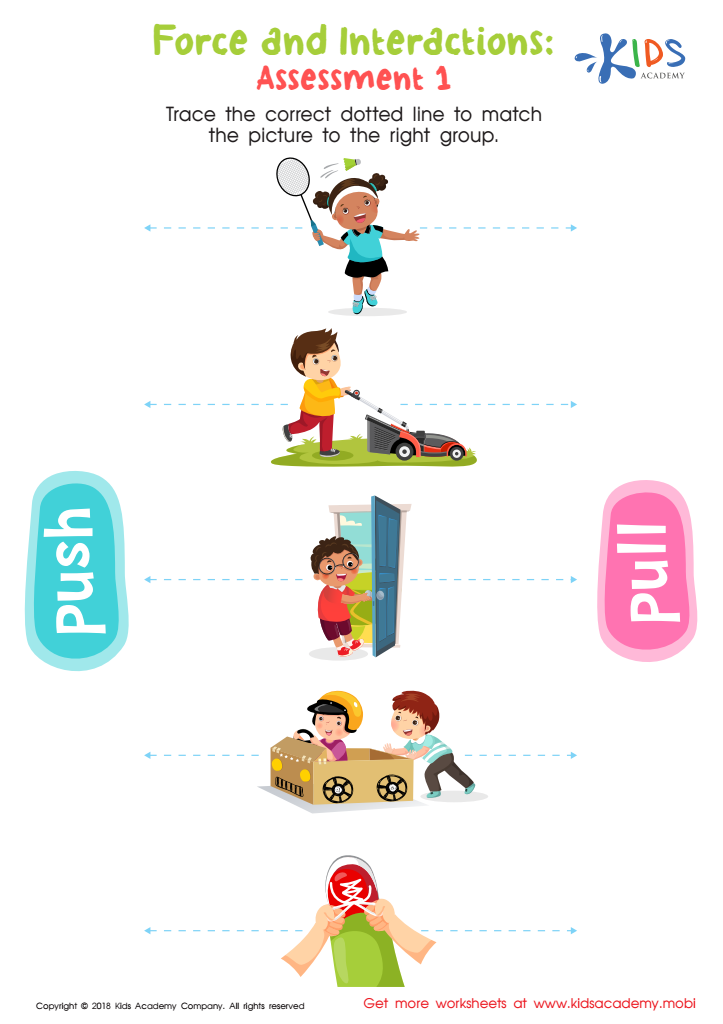

Force and Interactions: Assessment 2 Worksheet
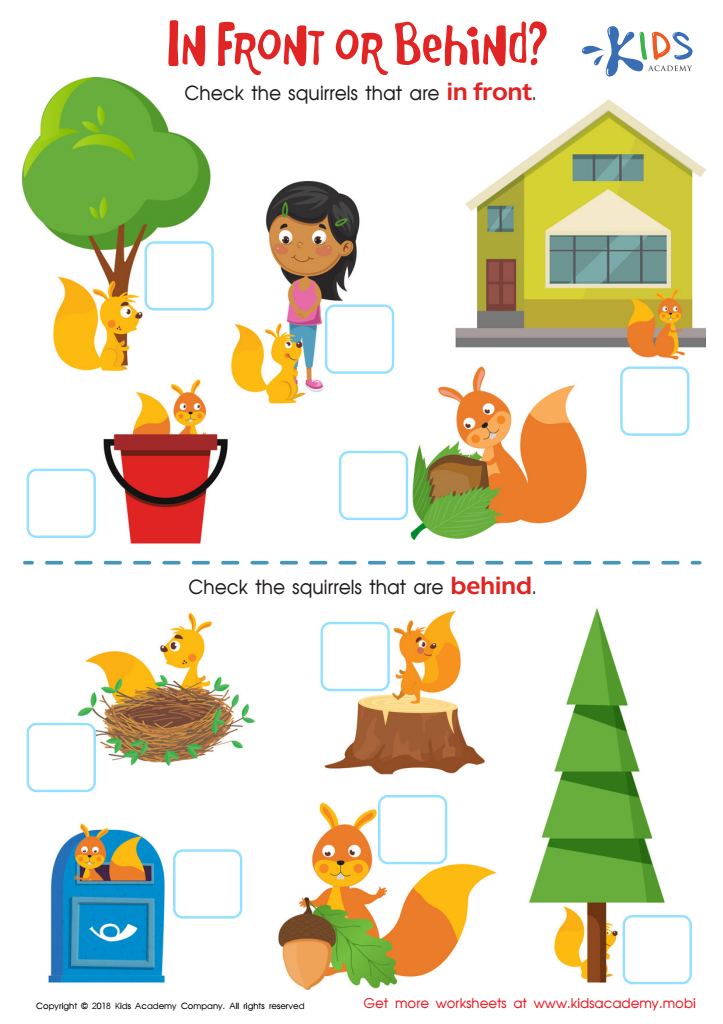

In Front or Behind: Part 2 Worksheet
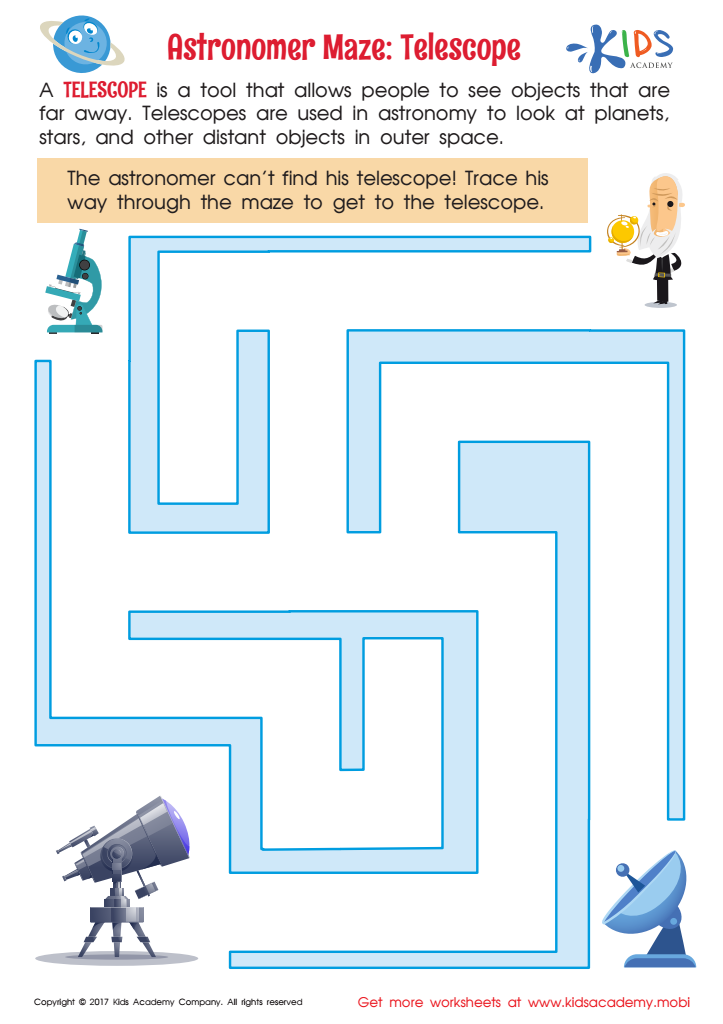

Astronomer Maze: Telescope Worksheet
Spatial awareness is a critical cognitive skill developed during early childhood, and it significantly impacts various aspects of a child's growth and learning. For ages 4-7, honing spatial awareness skills not only enhances their comprehension of the physical world but also lays the foundation for future academic success and daily functioning.
Firstly, spatial awareness helps children understand their relationship with the objects and people around them. This understanding is crucial for everyday activities, such as navigating a playground, organizing toys, or dressing independently. It promotes safety and confidence as children learn to judge distances, recognize shapes, and anticipate movement.
Furthermore, spatial awareness is closely linked to success in subjects like mathematics, science, and literacy. Preschoolers with strong spatial skills are better equipped to grasp mathematical concepts such as geometry, symmetry, and measurement. In reading and writing, spatial awareness helps children recognize letter shapes, spell words, and use proper spacing.
Lastly, developing spatial awareness through activities such as puzzles, building blocks, and drawing not only improves fine motor skills but also encourages problem-solving, creativity, and critical thinking. These skills are transferable to various areas of life, promoting overall cognitive development and making learning experiences more enjoyable and fruitful.
In sum, investing in spatial awareness nurtures a well-rounded development in children, paving the path for academic achievement and essential life skills.
 Assign to My Students
Assign to My Students



